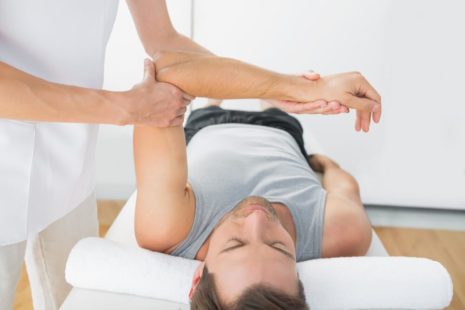Staying in shape with a torn ACL (anterior cruciate ligament) can be challenging, but it’s still possible to maintain fitness and overall well-being while recovering from this injury. It’s important to consult with a healthcare professional, such as a physical therapist or orthopedic surgeon, to develop a personalized exercise plan that is safe and appropriate for your specific situation.
Here are some general tips for staying in shape with a torn ACL…
- Focus on Non-Weight-Bearing Activities – Since high-impact activities and sports that involve running, jumping, and cutting movements can exacerbate a torn ACL, it’s important to focus on non-weight-bearing or low-impact activities that minimize stress on the knee joint. Examples include swimming, cycling, rowing, and using an elliptical machine.
- Strength Training: Strengthening the muscles surrounding the knee joint, particularly the quadriceps, hamstrings, and calf muscles, can help provide stability and support to the knee and reduce the risk of further injury. Focus on exercises that target these muscle groups, such as leg presses, hamstring curls, calf raises, and hip abduction/adduction exercises.
- Core and Upper Body Workouts – While recovering from a torn ACL, you can also focus on strengthening your core and upper body muscles to maintain overall fitness and improve posture and stability. Exercises such as planks, bridges, push-ups, and shoulder presses can be incorporated into your routine.
- Balance and Stability Training – Balance and stability exercises can help improve proprioception (awareness of joint position) and reduce the risk of falls or injuries. Balance exercises such as single-leg stands, stability ball exercises, and balance board exercises can help improve stability and coordination.
- Flexibility and Mobility Work – Maintaining flexibility and mobility in the joints and muscles surrounding the knee can help prevent stiffness and improve range of motion. Incorporate stretching and mobility exercises for the hips, thighs, calves, and ankles into your routine to maintain flexibility and reduce the risk of muscle imbalances.
- Cardiovascular Conditioning – While high-impact cardio activities may be limited with a torn ACL, there are still plenty of low-impact cardiovascular exercises you can do to maintain cardiovascular health and endurance. Focus on activities such as brisk walking, cycling, swimming, or using a rowing machine to get your heart rate up and improve cardiovascular fitness.
- Modify Activities as Needed – Be mindful of your limitations and avoid activities or movements that cause pain or discomfort in the injured knee. Modify exercises as needed to accommodate your injury and gradually progress as you regain strength and stability.
- Consistency and Patience – Stay consistent with your exercise routine and be patient with your progress. Recovery from a torn ACL takes time, and it’s important to listen to your body and give yourself adequate rest and recovery between workouts.
Remember to always consult with your healthcare provider before starting any new exercise program, especially if you have a pre-existing injury such as a torn ACL. They can provide guidance on safe and appropriate exercises to help you stay in shape while recovering from your injury.




